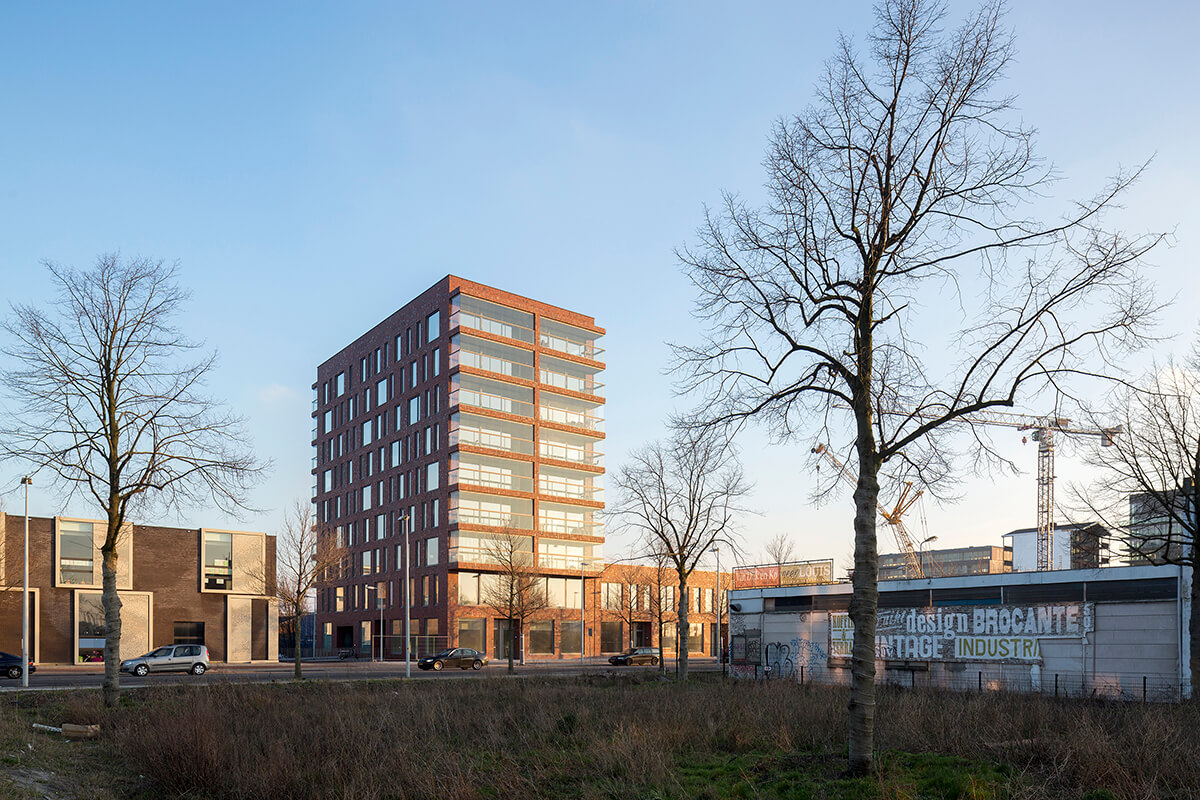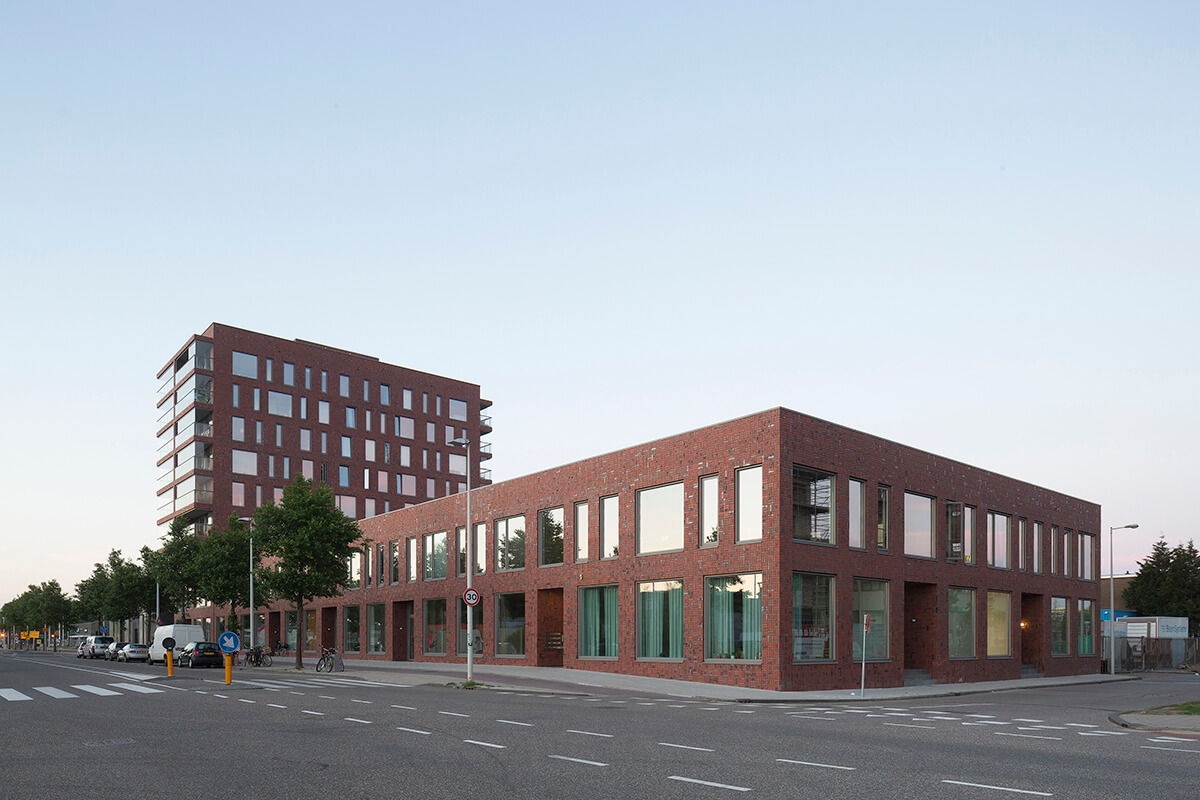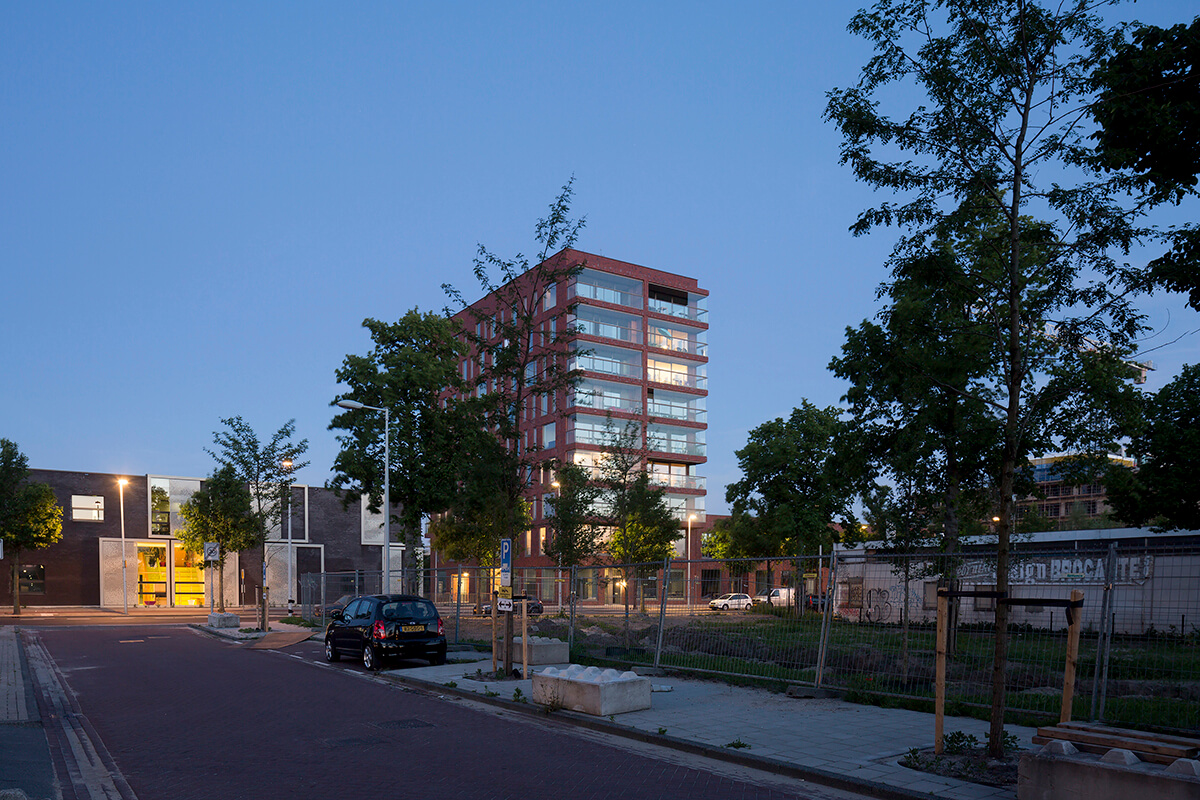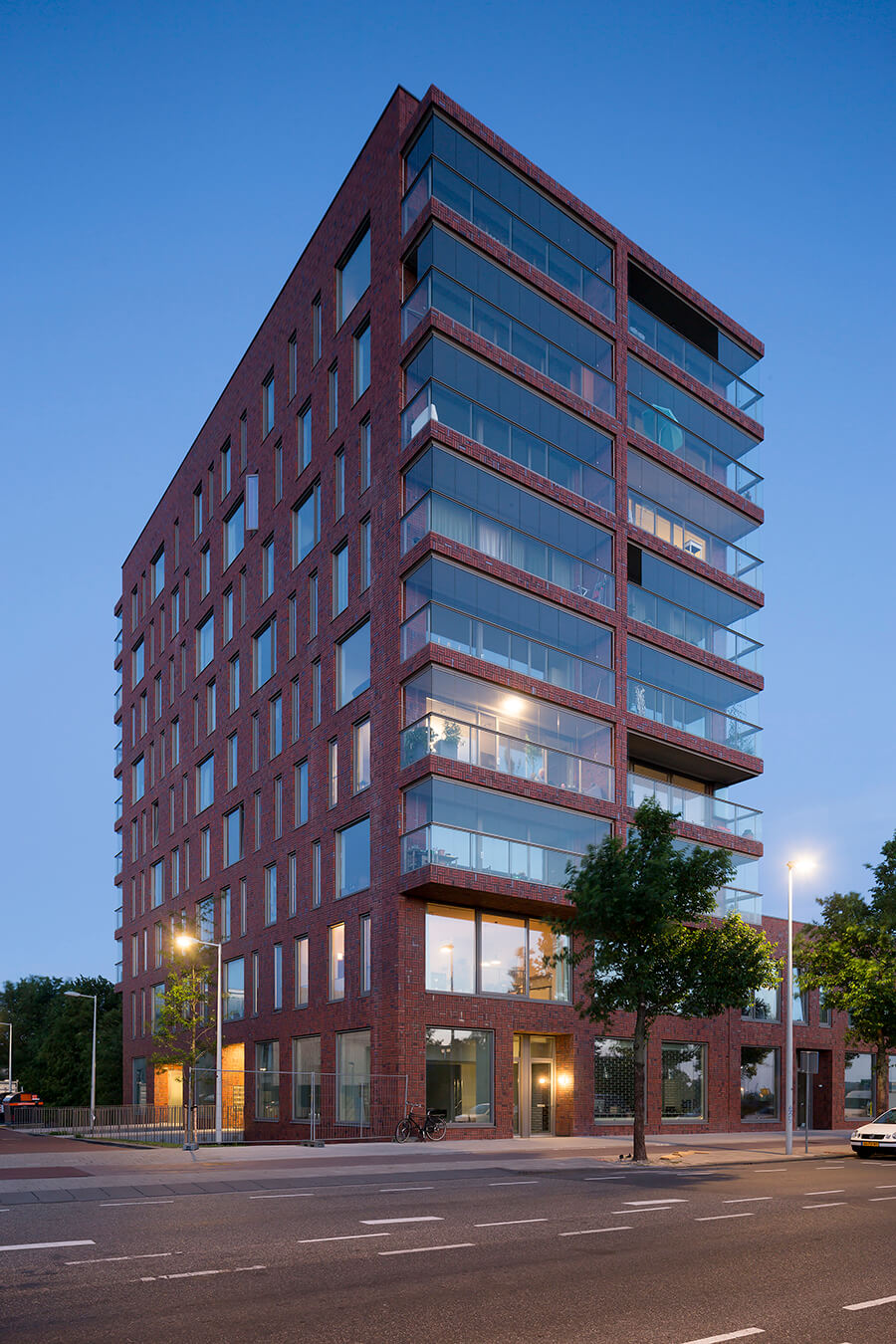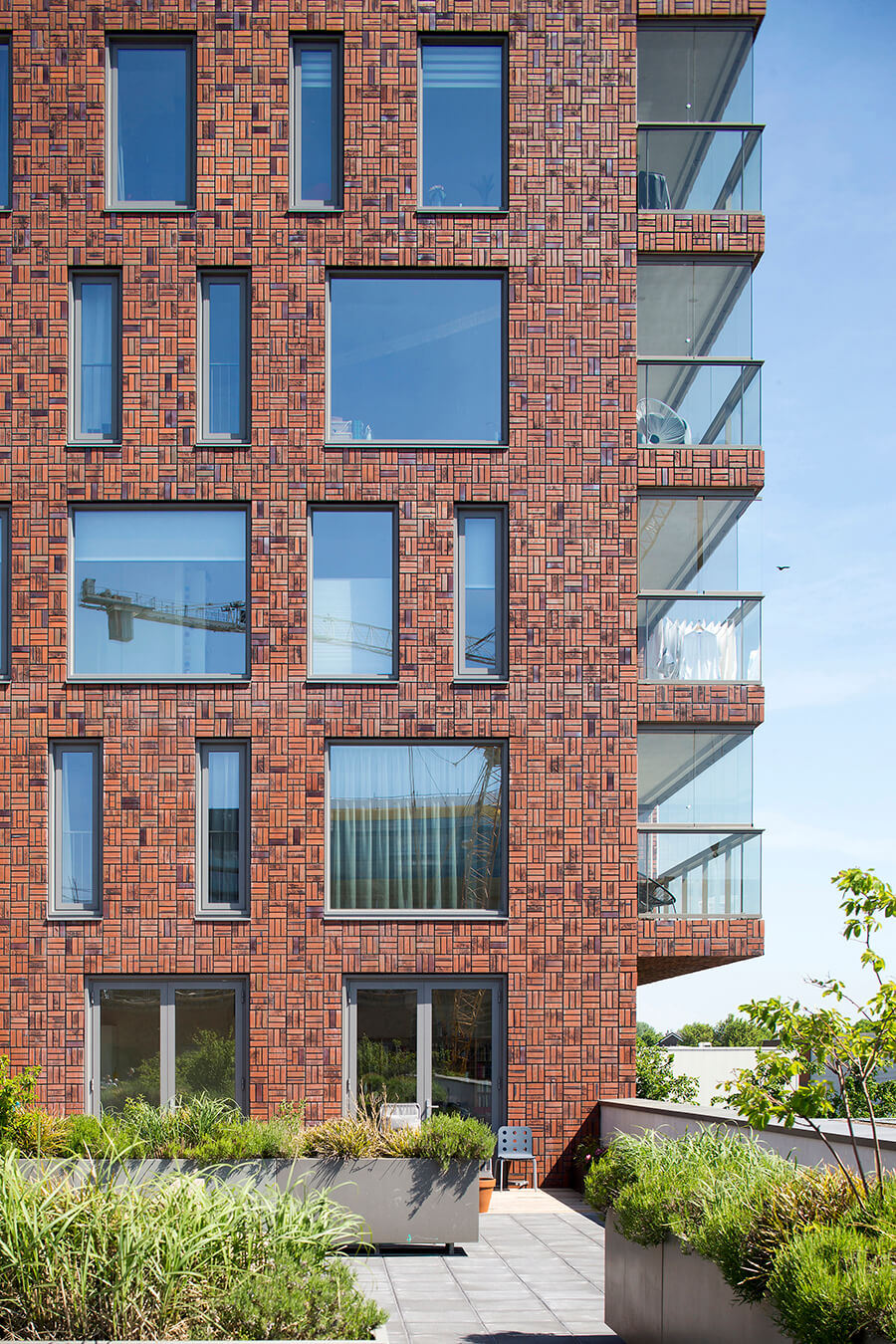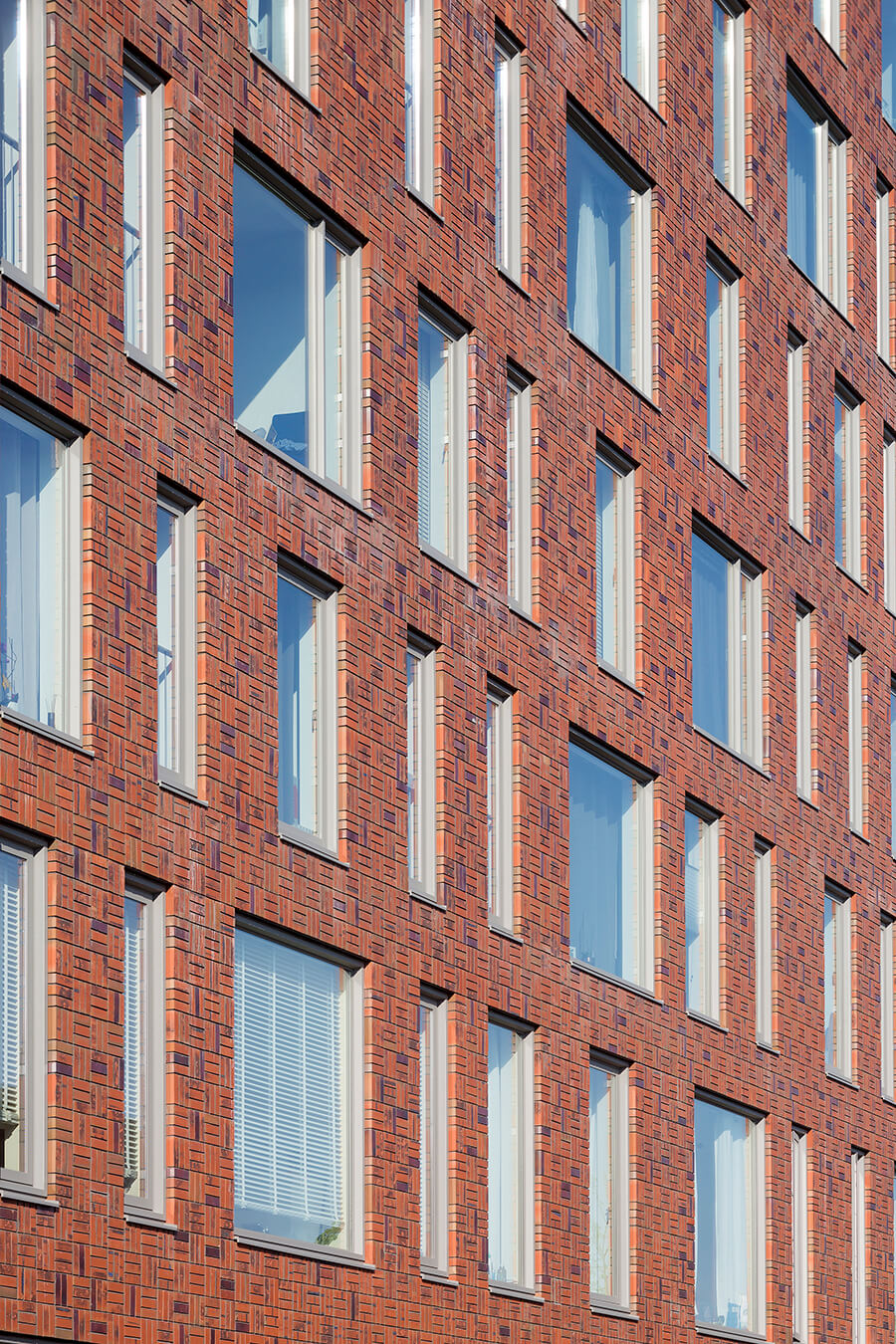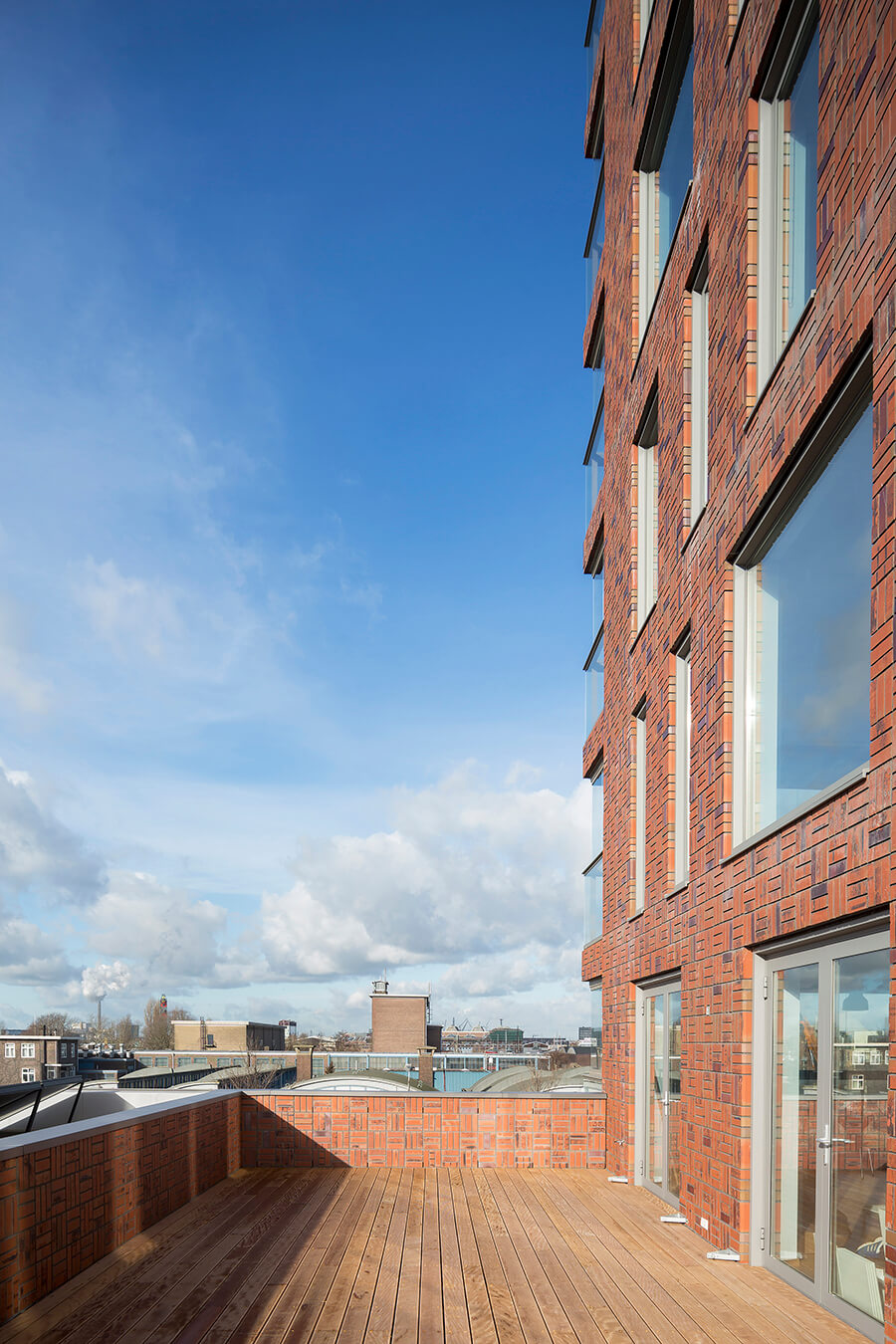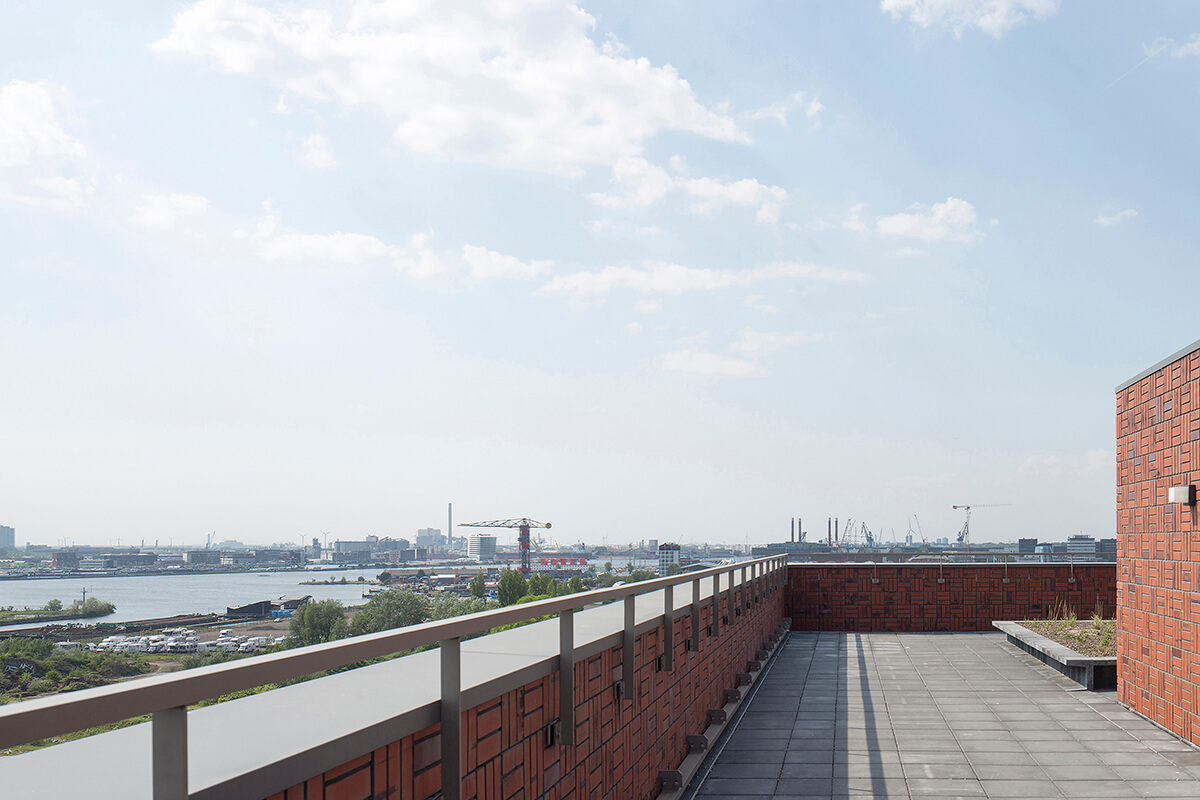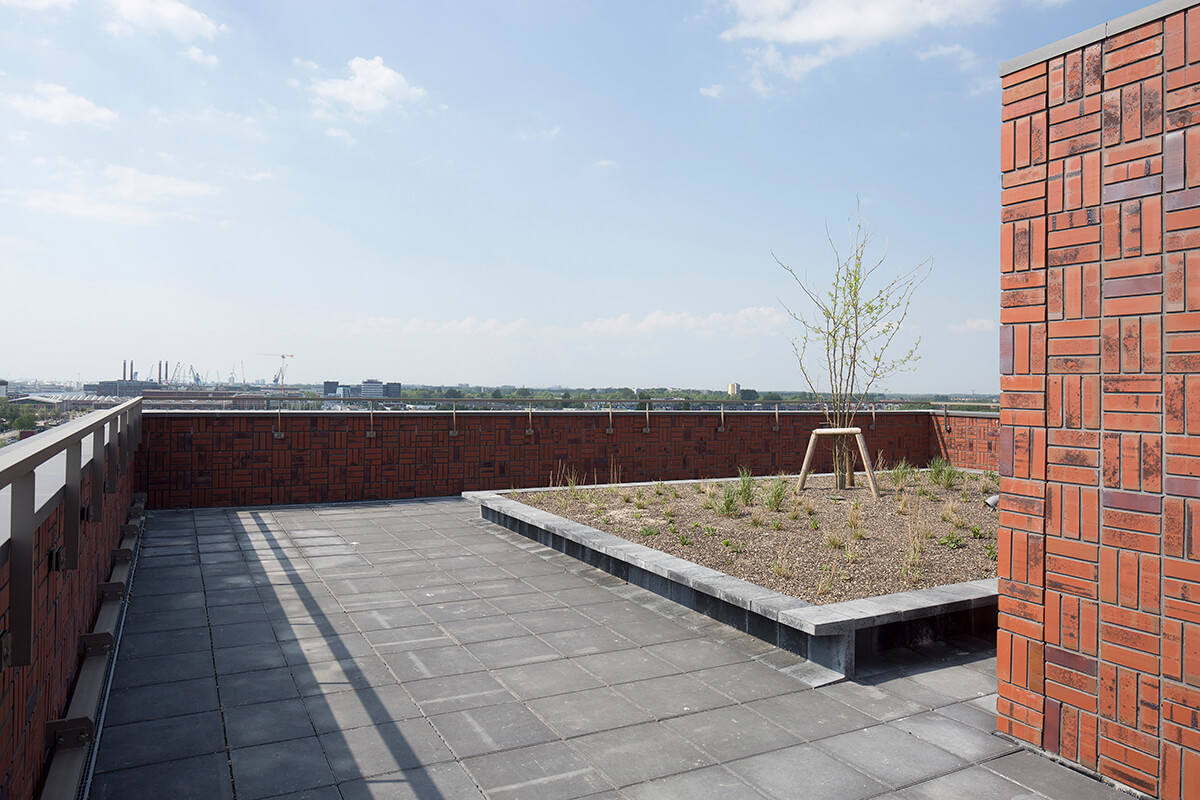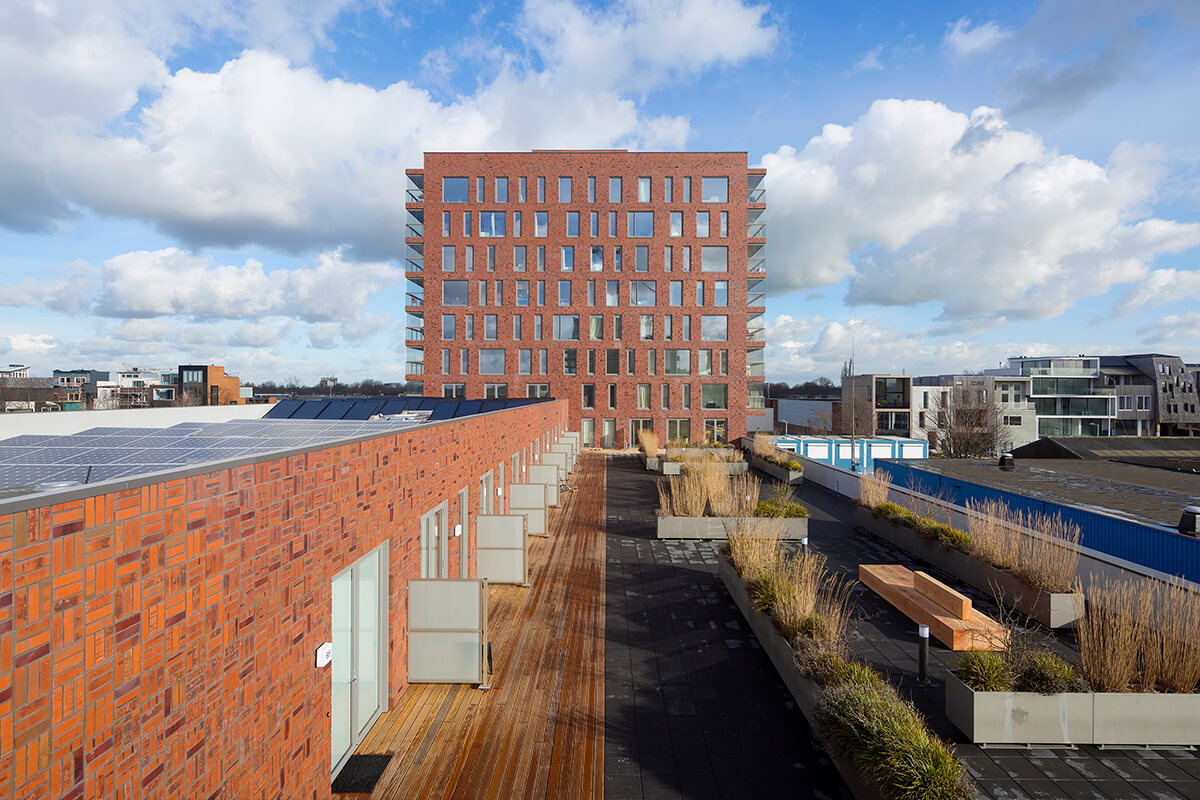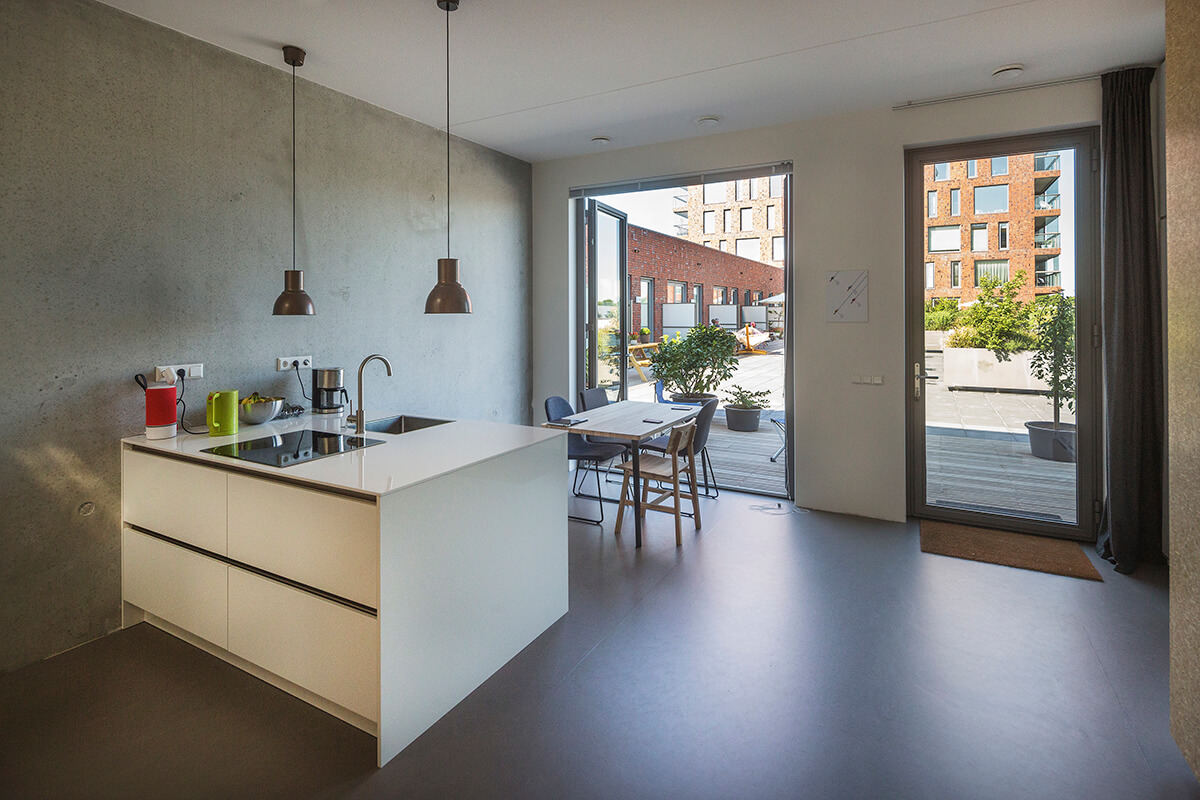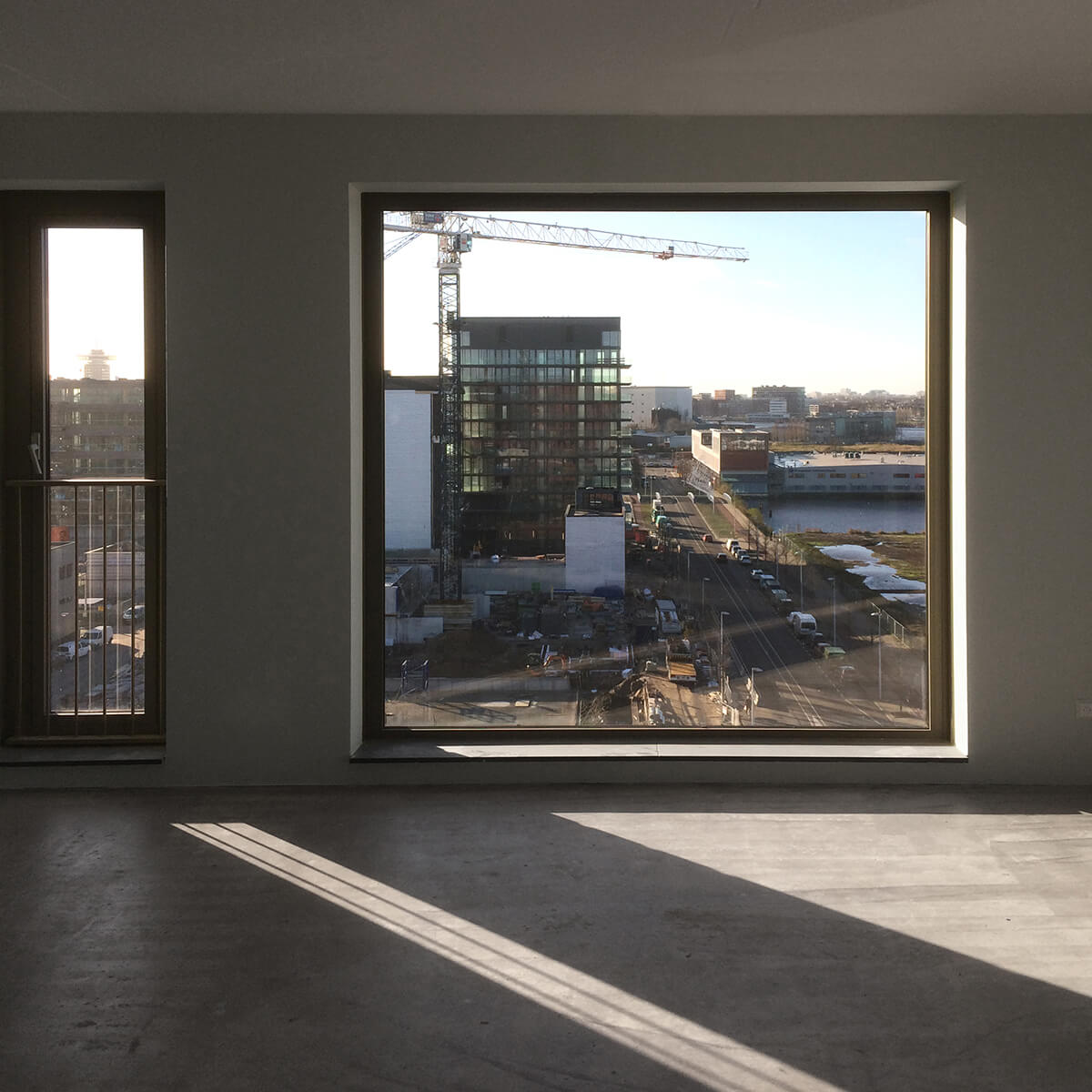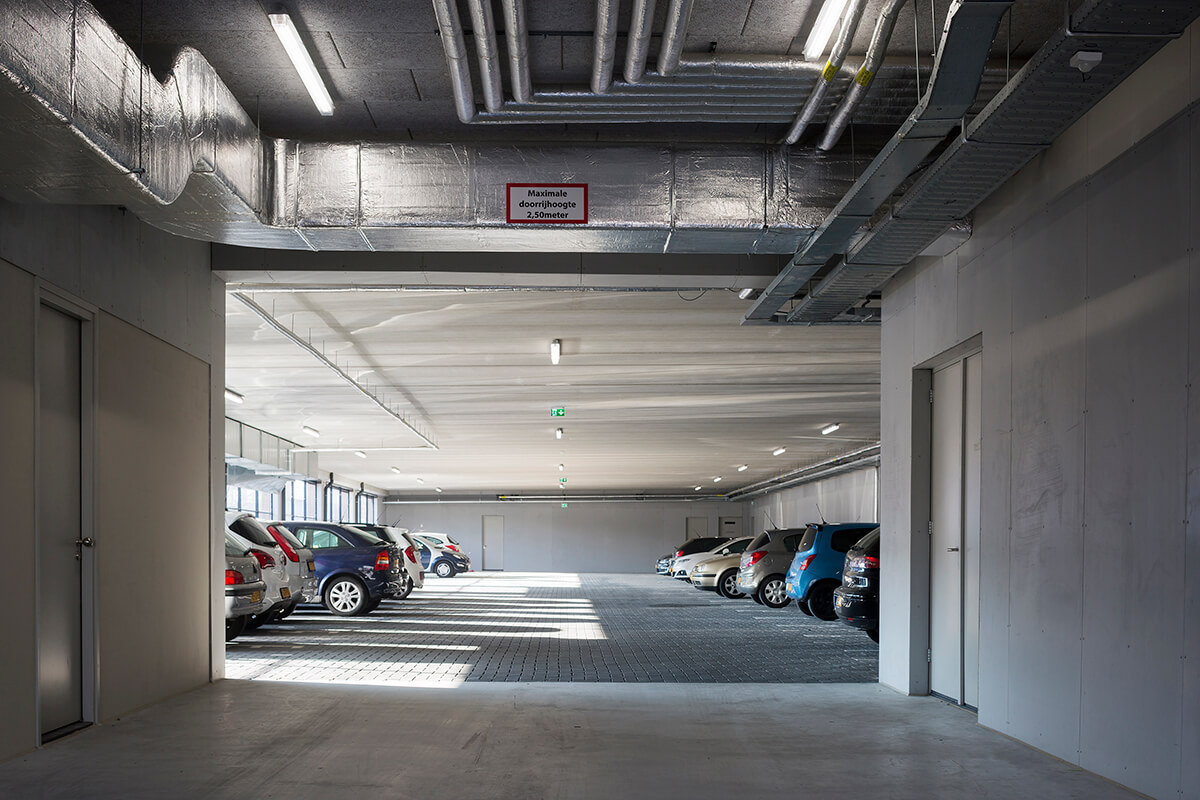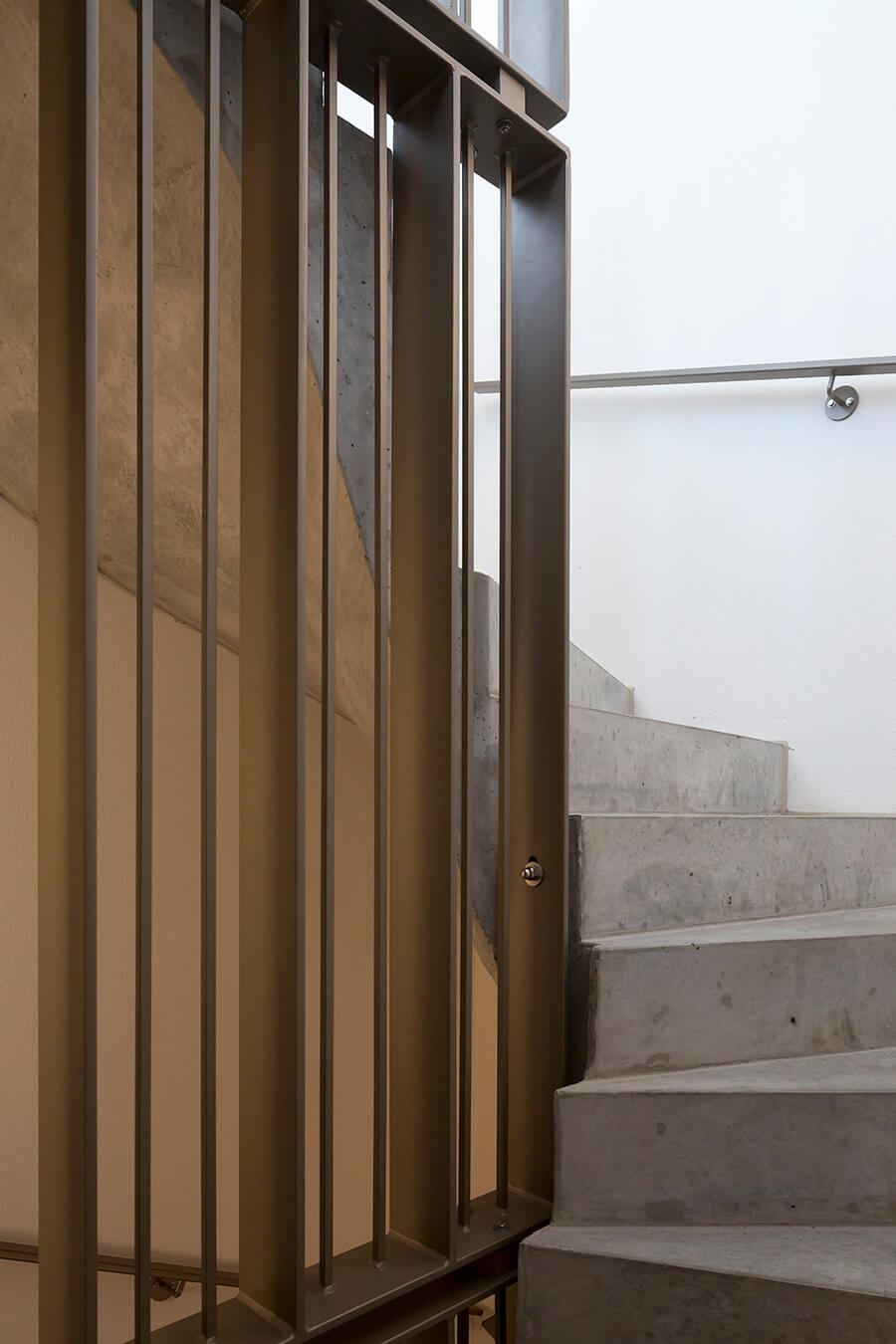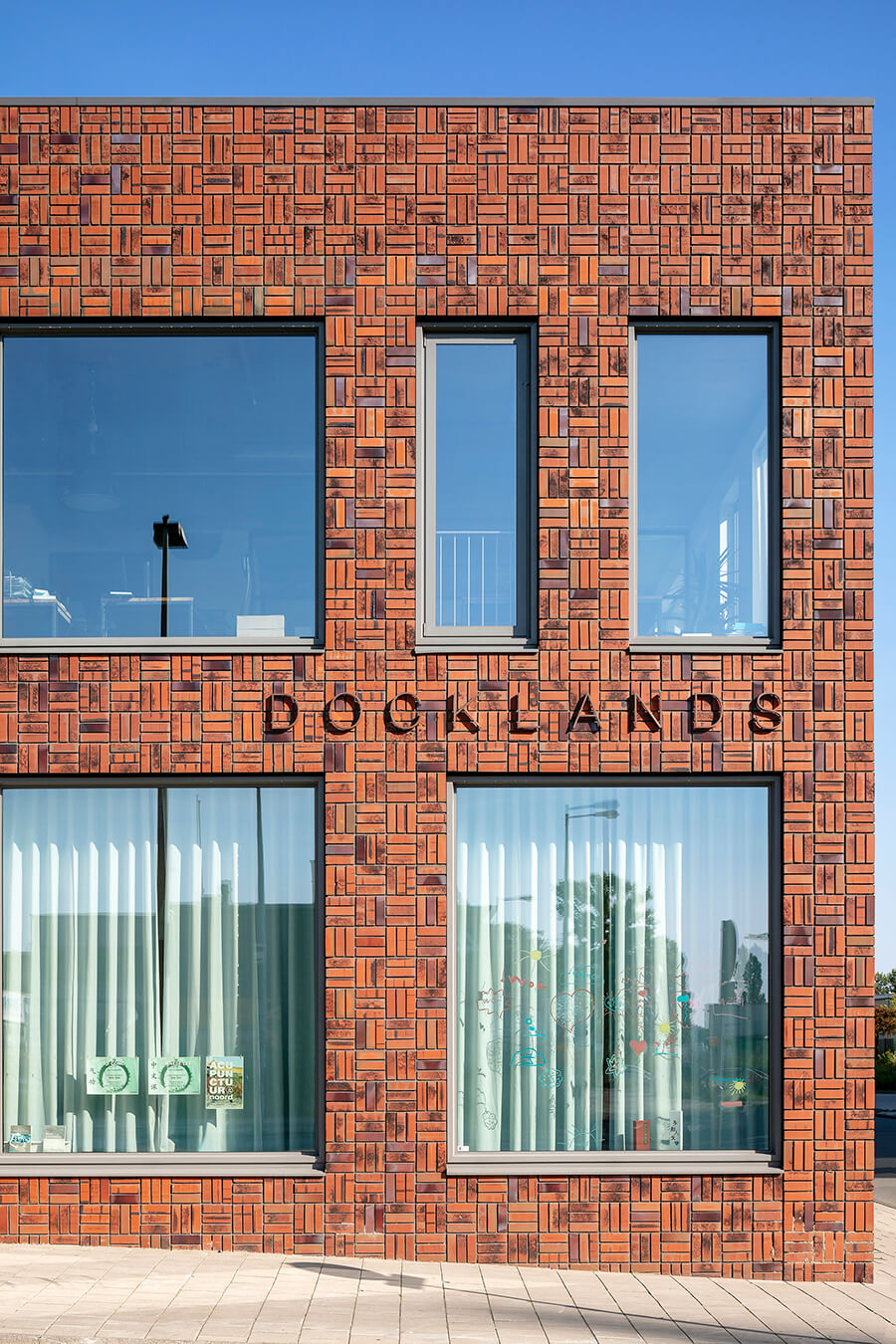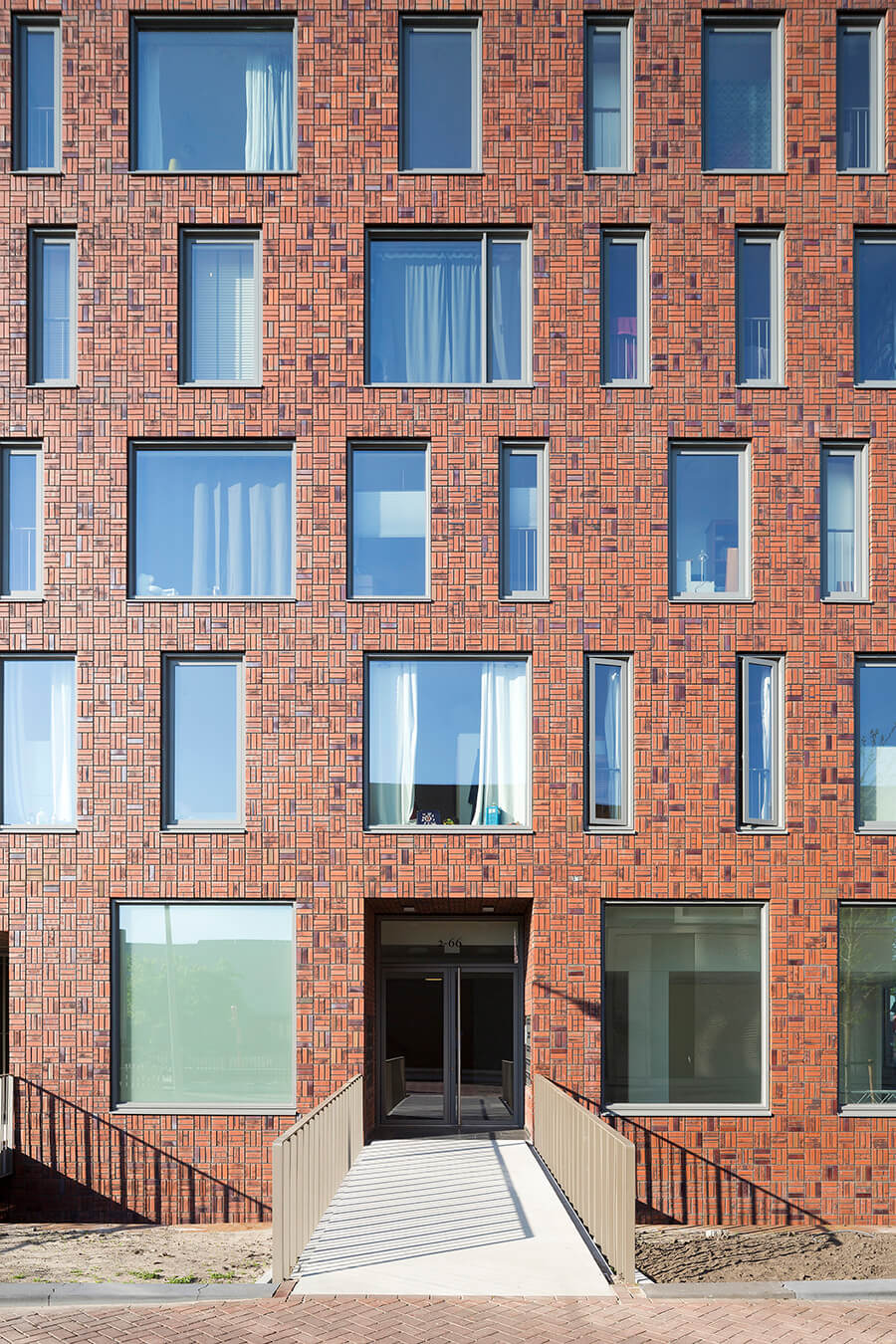Docklands / Marcel Lok_Architect
Docklands / Marcel Lok_Architect
Description
Buiksloterham (BSH) is part of a former industrial area located on the Northern bank of the IJ-river in Amsterdam. The location is now being developed into a metropolitan, sustainable working and living area that houses more than 4.000 homes. Project Docklands was the winning entry in 2010 for plot 12 of a competition on sustainability in Buiksloterham, in which the municipality has selected our team on the best energy and sustainability concept.
The L-shaped complex consists of a slender tower containing nine storeys with a total of thirty-two apartments and a two-storey base, with thirteen business units and parking on the ground floor and twelve compact studios on the first floor.
On top of the parking garage a collective roof garden is located together with the entrances of the studios. The roof of the tower is provided with a communal roof terrace planted with thornless honeylocust trees (Gleditsia triacanthos Inermis), a symbolic reference to the 13th century Torre Guinigi Lucca. All apartments also feature a large private outdoor space through a loggia or terrace. The project is built with specially produced industrial red-brown bricks, to refer to the former rough character of this former industrial area.
The bricks are traditionally processed on site in a modular bond. The brickwork module size of three stacked bricks has determined the size of the whole building in three dimensions and manifests itself as an all-enveloping skin of the volume.
The ‘grid’ of the elevations are provided with titanium coloured aluminium window frames with outward-opening windows. The loggia’s of the tower have large sliding windows and removable glass panels on the outside, which makes the balconies usable as an additional outdoor room during both winter and summer.
Docklands makes use of an energetic building concept, with innovative ways of climate control. The airconditioning is collectively controlled wherein the supply air is drawn in through ground tubes, through which the ventilation air is preheated in the winter and cooled in the summer. In addition, the building has its own geothermal heat sources and heat pumps. Thus the complex is not connected to the city’s heating network, but is self-sufficient through a building-related collective thermal storage system. The roof of the lower part is largely equipped with solar and photovoltaic panels.
Why brick
The project is built with specially produced industrial red-brown bricks, to refer to the former rough character of this former industrial area. The bricks are traditionally processed on site in a modular bond. The brickwork module size of three stacked bricks has determined the size of the whole building in three dimensions and manifests itself as an all-enveloping skin of the volume. With this primordial and time resistant material in a square module, we also wanted to make a link in a contemporary way with the medieval tower in Lucca.
Extra Info
| Project team: | Marcel Lok, Freddy Koelemeijer, Coen Smit, Niels Westmeijer, Nadine der Kinderen, Erik Brusse Client/Contractor: Vink Bouw, Nieuwkoop |
| Structural engineer: | Pieters Bouwtechniek, Amsterdam |
| Physics consultant: | Fore Installatie Adviseurs, Sassenheim |
| Program: | 44 housing units (53-125 m²),13 work units (58-139 m²), 40 parking places, 2 communal roof terracces, energy-neutral built |
| Gross floor area: | 7.130 m² |
| Gross content: | 26.878 m³ |
| Usable floor area: | 4.452 m² |



